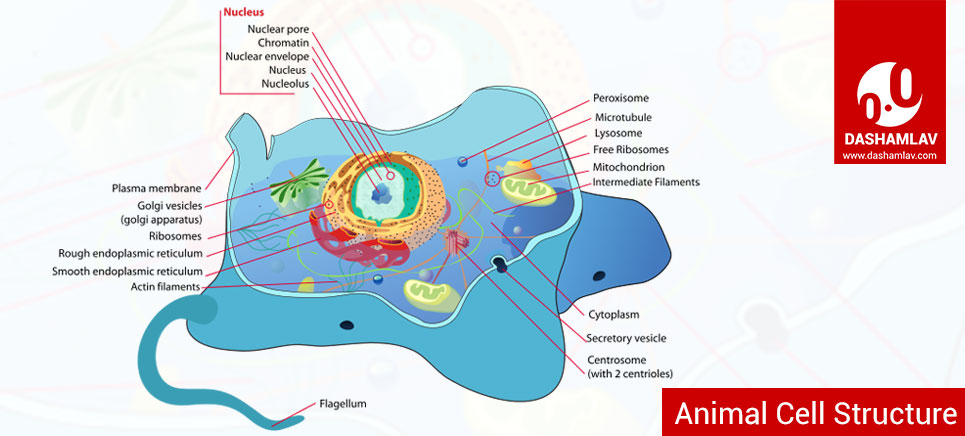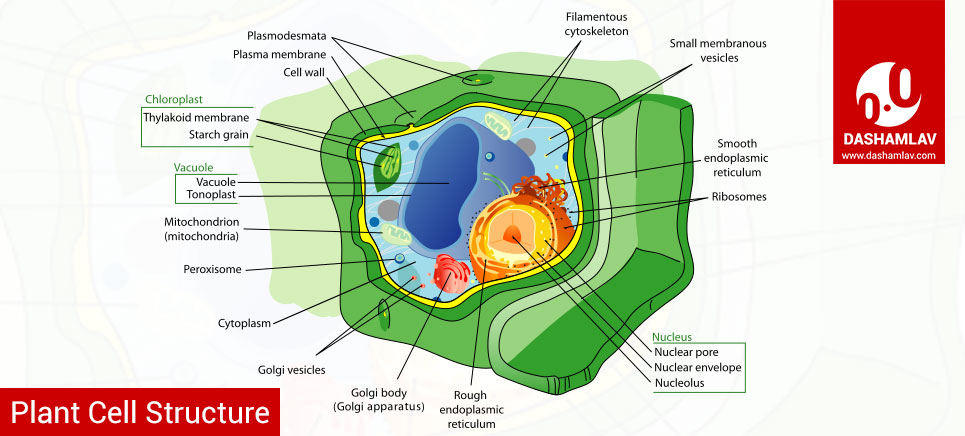Have you ever seen a brick wall? There are so many bricks that make one wall. Isn’t it? Just like what’s brick to a wall, cells are to all living organisms. Cells are building blocks of multicellular organisms like plants and animals. These building blocks are extremely tiny compartment like structures. In this article we will be talking about cells, structure of the cells and we will also be answering some related interesting questions.
What are Cells?
Cells are the building blocks of life. Every living organism is essentially made up of one or more cells. From an amoeba to the giant whale or a banyan tree, their bodies are made up of cells.
An average human body composed of more than 37 trillion cells!
A cell has a well-defined structure and it performs specific life activities actually occur within these cells. Cells require energy as they are living units. To obtain energy, the cells burn food like glucose in the respiration process. While plants and animals both have cells, there are some basic differences between a plant and an animal cell. We will explain these differences further on.
Can we see cells through naked eyes?
Cells are microscopic structures. Most of cells are so small that you just cannot see it with your naked eyes. If someone wishes to observe cells, he or she would require a microscope. Most diagrams of cells which you see online or in your books, they are highly magnified.
Who Discovered the Cell? And when?
Cell was discovered almost 350 years ago. Yes, you heard it right! In the year 1665, a German scientist named Robert Hooke discovered the first cell. He used a primitive microscope to examine a slice of cork. That is when he discovered the cells for the first time. The cell observed by Robert Hooke were dead cells. Later, scientists kept on building their knowledge based on Hooke’s discovery. The entire journey, right from Hooke’s discovery till now, is very fascinating. Read more about it in this article.
Structure of a Cell
Each cell is made up of many smaller parts of a cell. Some of these parts are common in both plants and animal cells. Some other parts are specific to either a plant cell or an animal cell.
Parts that are Found Both in Plant and Animal Cells
1. Cell Membrane
It is a thin layer covering the cell. It is also called the plasma membrane. The cell membrane encloses the nucleus and cytoplasm. Nucleus and cytoplasm are sometimes jointly referred to as protoplasm as they constitute the living part of the cell. It is due to the cell membrane that cell is not only enclosed but it also has a proper shape.
SEE: Differences between cell membrane and cell wall
There are tiny pores in the cell membrane. It is these pores through which food and oxygen enter the cell and waste products like carbon dioxide (CO2) comes out. The cell membrane controls the movement of substances inside the cell as well as the ones which are outside it.

2. Cytoplasm
It is a transparent jelly-like substance that fills the space between the nucleus and cell membrane. The role of cytoplasm is very important as it acts like a factory-floor — new molecules are formed here. The material which enter the cell is utilized for such formation. Release and storage of energy also take place during this process.
This is the reason why cytoplasm is also called the chemical factory of the cell. Cytoplasm of a cell consists of many tiny structures called organelles like the nucleus, mitochondria, Golgi bodies, ribosomes, etc.
4. Nucleus
It is one of the organelles found in the cytoplasm of the cell. In an animal cell, the nucleus is found at the center whereas it is towards the edge in a plant cell. It is the largest organelle of the cell and is almost spherical in shape. One of the most important functions of the nucleus is to control all the activities of the cell. There is a membrane between cytoplasm and nucleus called the nuclear membrane.
5. Mitochondria
Mitochondria provide energy for the activities of the cell. During the process of respiration, food (like glucose) is broken down by oxygen, and energy is produced. They are thus aptly called the powerhouse of the cell.
Parts Found Only in Plant Cells
1. Cell Wall
Cell Wall is a thick layer around a plant cell, just outside the cell membrane. Cell wall and it is made up of a tough material called cellulose. It not only gives shape to a plant cell but also provide strength to it and holds it together.
Plants cannot move from one place to another, so they require protection against extremities of surrounding conditions. From high-speed wind, moisture in the atmosphere, or temperature variation, the tough cell walls protect the plant against all odd situations.
Remember, the cell wall is not a living part of the plant cell.

2. Chloroplasts
These are the organelles present in the cytoplasm of a plant cell. Most plants are green in color — and that is because of the presence of chloroplasts. Chloroplasts are green in color due to the presence of chlorophyll, a green pigment that can absorb energy from sunlight.
Plants are autotrophs, meaning they make their own food. The process of food making in plants takes place in chloroplasts. This process is called photosynthesis. In the presence of sunlight, both water and carbon dioxide combine to produce food (like glucose).
3. Large Vacuole
Vacuole is an empty space in the cytoplasm of a cell. The main function of a vacuole is to store various substances including the waste ones. Vacuole contains substances dissolved in water and a membrane encloses it. “Cell sap” is the name of the liquid that is present in a vacuole. The cell sap contains dissolved salts and sugars. In fact, the pressure of cell sap plays an important role in pushing the outer parts of the cell. This is the reason why plant cells are firm.
It is important to keep it in mind that large vacuoles are always present in plants. Most animal cells have no vacuole but there are a few exceptions as well. Amoeba, for instance, has small vacuoles. Interestingly, in amoeba, these vacuoles contain food particles.
Parts Found Only in Animal Cells
1. Centrosome
A centrosome is a microtubule-organizing center or MTOC which is found only in animal cells. Interconnecting fibers link two perpendicular centrioles to form a centrosome. It is found near the nuclei of an animal cell. One of the main functions of the centrosome is to assist cell division during mitosis. Centrosome also directs the movement of microtubules and other cytoskeletal structures and proteins. This allows large changes to the shapes of animal cell membranes.
4. Lysosomes
These are dense granular structures. A membrane encloses the lysosomes. They occur freely in the cytoplasm of most animal cells. Sometimes, they are also present in cells of some lower plant groups like slime molds and saprophytic fungi. In fact, in animals, lysosomes are present in all cells except the Red Blood Cells (RBC). They contains hydrolytic enzymes that are responsible for intracellular and extracellular digestion. Lysosomes have no typical shape. It can be granular or globular.
Use the citation below to add this article to your bibliography
"Cell Structure: Major Parts of Animal and Plant Cells." Dashamlav.com. Web. 26 July 2024. <https://dashamlav.com/cell-structure-animal-plant-cells-parts/>
Dashamlav.com, "Cell Structure: Major Parts of Animal and Plant Cells." Accessed 26 July 2024. https://dashamlav.com/cell-structure-animal-plant-cells-parts/
"Cell Structure: Major Parts of Animal and Plant Cells." (n.d.). Dashamlav.com. Retrieved 26 July 2024 from https://dashamlav.com/cell-structure-animal-plant-cells-parts/
